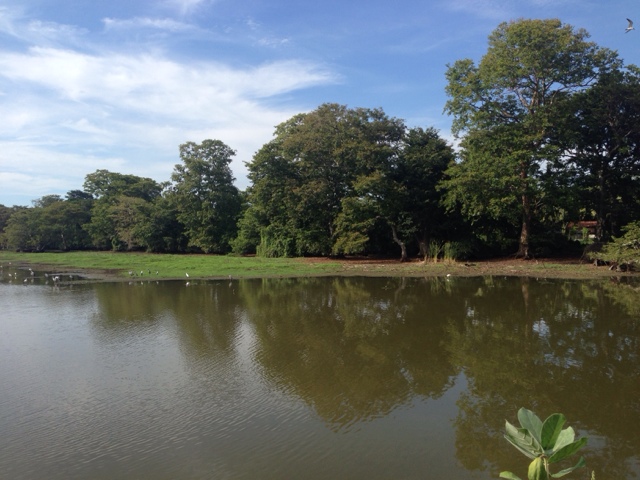The place we're staying at in Batticaloa has a huge traditional easy chair that I feel spoils me every time I sit (or lie down) in it. In addition to its capacious dimensions the design is graceful. Most of all I am attracted to the wonderful cane weaving that serves as a seat and back. It's superbly geometric, lightweight yet strong, and it always lets in the air.
Same goes for the hammock I snuggled into today, mesmerized by the sound of lapping water in the lagoon as I stared up at the wood apple tree above.
It's not so easy for an outsider to see patterns of how things are put together in Sri Lanka but if you look, they stand out. The easygoing nature of people here, ready with a smile or a friendly nod, is unexpected or even jarring to a Westerner. Where are the frowns and smug expressions we're so used to as we sink into our parkas to avoid the cold?
I'm the last person to make a stereotype of Sri Lankans. I know how hard my friend Janaka Wijesundara works for the benefit of his students at Moratuwa University. I've seen the time and concern his colleagues put into their work and I know the energy they burn on questions of the " Megapolis" and other worries. For that matter, wherever we stay in Sri Lanka the easygoing smile or wave of the hand of our guesthouse people is underlain by a huge amount of work. It takes a busy staff with a complete set of skills to keep guests happy whether it's feeding them, cleaning up after them, or maintaining their quarters. By the way we think of "foreigners" as Westerners. But did I tell you how hard the Indian guests are on our hosts? Hospitality is much more gratefully accepted by Europeans, at least from what I've seen.
So what is it about Sri Lanka? I struggle always, wherever I am in the country, to characterize it. One thing I'm sure of, though I can't quantify it, is that people here are hard wired differently than in the West. Our guesthouse host, who was a wing commander in the Sri Lankan Air Force before he took over the guesthouse from his parents, told me the other day his family is "pretty sure" their pet dalmatian will come into its next life as a human. "It's our belief" he tells me. More important maybe was a pile of bags in the lobby the other day, filled with food, that he's giving to charity. Yes we give charity in the West. But here it's different. Or maybe we're different.
The warp and weave of a society tells you a lot about its people. Maybe you can't understand every piece of the puzzle. Maybe your impressions are a bit hazy. But there is so much to learn here about how to live.
























































